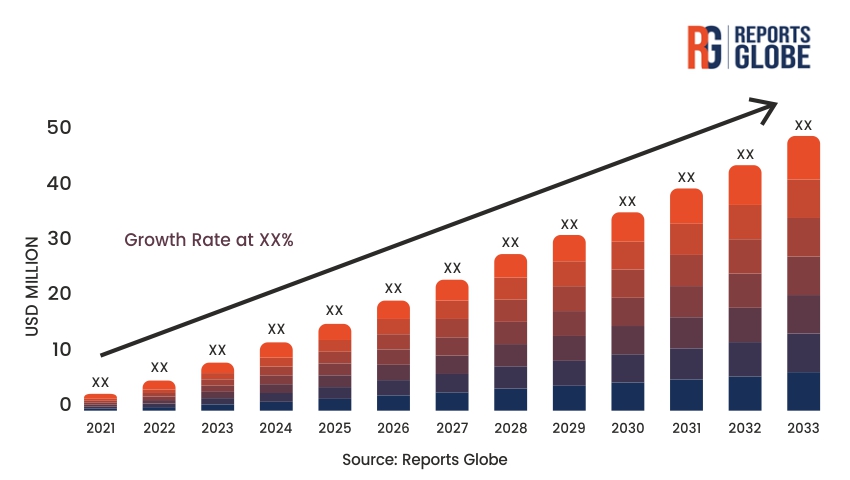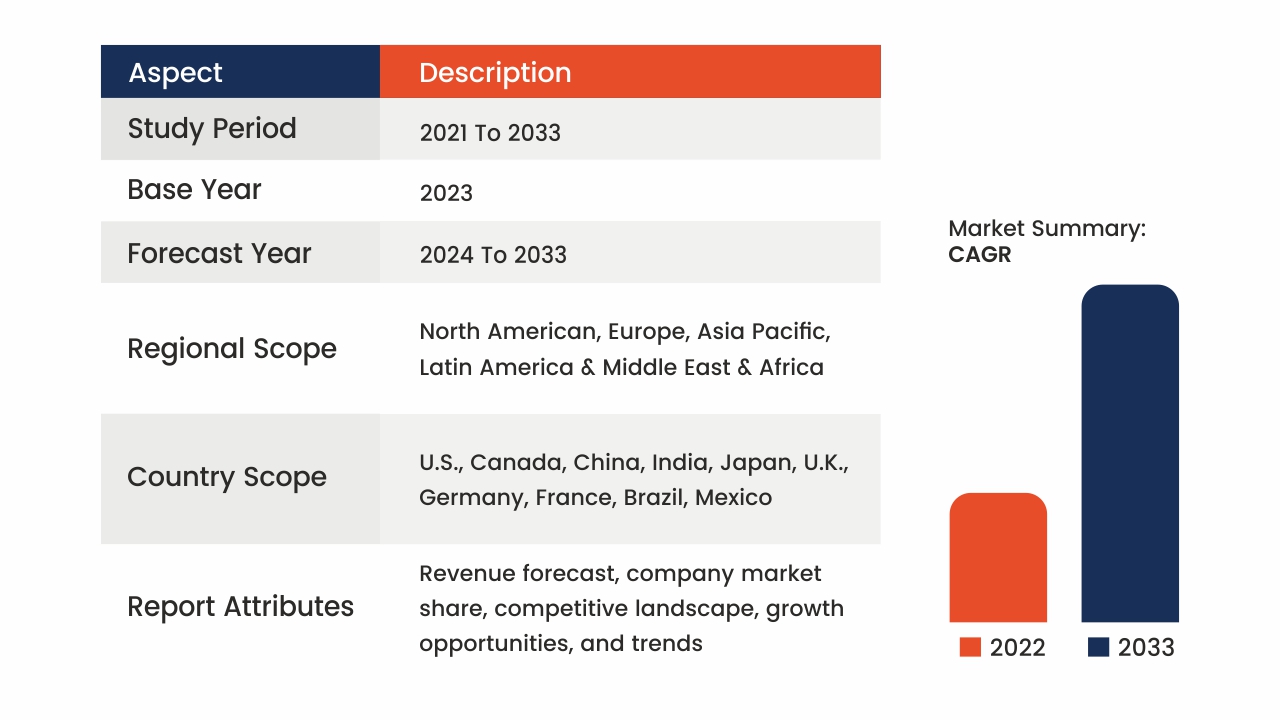Market Overview
The global ultrasonic aspirator market is experiencing significant growth driven by advancements in medical technology and increasing demand for minimally invasive surgical procedures. Ultrasonic aspirators are essential medical devices used to emulsify and remove tissues, particularly in delicate and precise surgical operations such as neurosurgery, oncology, and laparoscopic procedures. These devices operate by using high-frequency ultrasonic vibrations to break down soft tissues while preserving surrounding critical structures. The market is characterized by ongoing innovation in device design, functionality, and efficiency, aiming to enhance surgical outcomes and patient safety. The aging population, rising prevalence of chronic diseases, and growing healthcare expenditure are further fueling the demand for ultrasonic aspirators. Additionally, increasing awareness about the benefits of minimally invasive surgeries, such as reduced recovery times and lower complication rates, is boosting market growth. However, the high cost of these devices and stringent regulatory requirements may pose challenges to market expansion. Overall, the ultrasonic aspirator market is poised for robust growth, driven by technological advancements and the evolving needs of the healthcare sector.

Key Takeaways of the Market
- Increasing demand for minimally invasive surgical procedures is driving market growth.
- Technological advancements in device design and functionality are enhancing surgical outcomes.
- The aging population and rising prevalence of chronic diseases are key market drivers.
- High costs and stringent regulatory requirements are potential market restraints.
- Growing healthcare expenditure and awareness about minimally invasive surgeries offer significant market opportunities.
Market Driver
The primary driver of the ultrasonic aspirator market is the increasing demand for minimally invasive surgical procedures. Minimally invasive surgeries (MIS) have gained widespread acceptance due to their numerous benefits over traditional open surgeries, including smaller incisions, reduced pain and scarring, shorter hospital stays, faster recovery times, and lower risk of complications. Ultrasonic aspirators play a critical role in these procedures by allowing surgeons to precisely and effectively emulsify and aspirate tissues without damaging surrounding structures. This is particularly important in complex and delicate surgeries such as neurosurgery and tumor removal, where precision is paramount. The growing prevalence of chronic diseases, such as cancer and neurological disorders, has led to an increase in the number of surgical interventions, further driving the demand for advanced surgical tools like ultrasonic aspirators. Additionally, advancements in ultrasonic technology, including the development of portable and user-friendly devices, have expanded their use across various surgical specialties, enhancing the overall growth of the market.
Market Restraint
Despite the promising growth prospects, the ultrasonic aspirator market faces several challenges, primarily related to the high cost of these devices and stringent regulatory requirements. Ultrasonic aspirators are sophisticated and technologically advanced instruments, which makes them relatively expensive. The high cost can be a significant barrier, especially for smaller healthcare facilities and those in developing regions with limited budgets. Moreover, the procurement and maintenance costs associated with these devices can add to the financial burden on healthcare providers. Regulatory requirements for medical devices are stringent, ensuring safety and efficacy but also prolonging the approval process and increasing compliance costs. Manufacturers must adhere to rigorous standards set by regulatory bodies such as the FDA, CE, and other national health authorities, which can delay the introduction of new products to the market. Additionally, any changes in regulatory policies can impact market dynamics, posing challenges for manufacturers in terms of adapting to new requirements and ensuring continued compliance. These factors collectively act as restraints, potentially hindering the rapid growth of the ultrasonic aspirator market.
Market Opportunity
The ultrasonic aspirator market presents significant opportunities for growth, driven by continuous technological advancements, expanding applications, and strategic collaborations. One key opportunity lies in the development of next-generation ultrasonic aspirators with enhanced features such as improved precision, higher efficiency, and user-friendly interfaces. Technological innovations, such as the integration of artificial intelligence and robotics, can further enhance the functionality and application of these devices in complex surgeries. Additionally, the expanding use of ultrasonic aspirators in emerging fields such as regenerative medicine and aesthetic surgery offers untapped potential for market expansion. Strategic collaborations between manufacturers, healthcare institutions, and research organizations can foster innovation, accelerate product development, and facilitate market penetration. Furthermore, increasing healthcare expenditure in emerging economies presents a lucrative opportunity for market players to expand their footprint and address the growing demand for advanced surgical tools. By leveraging these opportunities, companies can enhance their market position, drive innovation, and contribute to the overall growth of the ultrasonic aspirator market.



Market Segment Analysis
Neurosurgery
The neurosurgery segment represents a significant portion of the ultrasonic aspirator market, driven by the critical need for precision and efficiency in brain and spinal surgeries. Ultrasonic aspirators are widely used in neurosurgery to safely remove brain tumors, vascular malformations, and other pathological tissues while preserving healthy brain structures. The ability to precisely emulsify and aspirate tissues with minimal thermal damage makes ultrasonic aspirators indispensable tools in neurosurgical procedures. Advances in ultrasonic technology, such as the development of devices with improved ergonomics, higher power output, and enhanced visualization capabilities, have further strengthened their adoption in neurosurgery. The rising prevalence of neurological disorders, including brain tumors and spinal cord injuries, coupled with the increasing number of neurosurgical interventions, is driving the demand for advanced ultrasonic aspirators. Healthcare providers are continually seeking innovative tools that can improve surgical outcomes, reduce operative times, and enhance patient safety, thereby contributing to the growth of the neurosurgery segment.
Oncology
The oncology segment is another key area of growth in the ultrasonic aspirator market, driven by the increasing incidence of cancer and the need for effective surgical interventions. Ultrasonic aspirators are extensively used in oncological surgeries to remove tumors and other cancerous tissues while minimizing damage to surrounding healthy tissues. These devices are particularly beneficial in complex cancer surgeries where precision and tissue preservation are paramount. The rising prevalence of various cancers, including liver, pancreatic, and kidney cancers, has led to an increased demand for surgical treatments, thereby boosting the adoption of ultrasonic aspirators. Advances in ultrasonic technology, such as the development of devices with enhanced tissue selectivity and real-time monitoring capabilities, have further expanded their use in oncology. Additionally, the growing focus on improving surgical outcomes, reducing recurrence rates, and enhancing the quality of life for cancer patients is driving the demand for advanced surgical tools like ultrasonic aspirators. The oncology segment is expected to witness significant growth as healthcare providers continue to adopt innovative technologies to address the challenges associated with cancer treatment.
Regional Analysis
The ultrasonic aspirator market exhibits diverse growth patterns across different regions, influenced by factors such as healthcare infrastructure, technological advancements, and regulatory frameworks.
- North America: North America holds a significant share of the ultrasonic aspirator market, driven by advanced healthcare infrastructure, high healthcare expenditure, and the presence of leading medical device manufacturers. The region’s strong focus on innovation and adoption of cutting-edge technologies in surgical procedures has propelled the demand for ultrasonic aspirators. The United States, in particular, is a major contributor to market growth, owing to the high prevalence of chronic diseases, increasing number of surgical procedures, and favorable reimbursement policies. Additionally, ongoing research and development activities and strategic collaborations between manufacturers and healthcare institutions further support market expansion in North America.
- Europe: Europe is another key market for ultrasonic aspirators, characterized by well-established healthcare systems, a growing aging population, and increasing demand for minimally invasive surgeries. Countries such as Germany, France, and the United Kingdom are leading contributors to market growth, driven by the adoption of advanced surgical tools and technologies. The region’s stringent regulatory standards ensure the safety and efficacy of medical devices, fostering trust among healthcare providers and patients. Moreover, the increasing prevalence of chronic diseases and the rising number of surgical interventions are fueling the demand for ultrasonic aspirators in Europe.
- Asia Pacific: The Asia Pacific region is expected to witness significant growth in the ultrasonic aspirator market, driven by rapid urbanization, increasing healthcare expenditure, and the rising prevalence of chronic diseases. Emerging economies such as China, India, and Japan are key contributors to market growth, owing to the growing demand for advanced medical technologies and the expansion of healthcare infrastructure. The region’s large population base and increasing awareness about the benefits of minimally invasive surgeries further support market expansion. Additionally, favorable government initiatives and investments in healthcare infrastructure are driving the adoption of ultrasonic aspirators in the Asia Pacific region.
- Latin America: Latin America is experiencing steady growth in the ultrasonic aspirator market, driven by improving healthcare infrastructure, increasing healthcare expenditure, and the rising prevalence of chronic diseases. Countries such as Brazil and Mexico are key contributors to market growth, owing to the growing demand for advanced surgical tools and technologies. The region’s focus on enhancing healthcare delivery and expanding access to advanced medical treatments is driving the adoption of ultrasonic aspirators in Latin America.
- Middle East and Africa: The Middle East and Africa region is witnessing gradual growth in the ultrasonic aspirator market, driven by increasing healthcare investments, improving healthcare infrastructure, and the rising prevalence of chronic diseases. Countries such as Saudi Arabia, UAE, and South Africa are key contributors to market growth, owing to the growing demand for advanced medical technologies and the expansion of healthcare facilities. The region’s focus on enhancing healthcare delivery and improving patient outcomes is driving the adoption of ultrasonic aspirators in the Middle East and Africa
Competitive Analysis
The ultrasonic aspirator market is highly competitive, with several prominent players focusing on product innovation, strategic collaborations, and geographic expansion to strengthen their market presence. Key players in the market include:
- Stryker Corporation: Stryker Corporation is a leading player in the ultrasonic aspirator market, offering a range of advanced surgical tools and technologies. The company’s Sonopet® Ultrasonic Aspirator is widely used in neurosurgery, spine surgery, and general surgery. Stryker Corporation focuses on continuous innovation, research and development, and strategic acquisitions to expand its product portfolio and market reach.
- Integra LifeSciences Corporation: Integra LifeSciences Corporation is a global leader in medical technology, offering a range of surgical instruments and devices, including ultrasonic aspirators. The company’s CUSA® Clarity and CUSA® Excel+ Ultrasonic Surgical Aspirators are designed for precise tissue removal in neurosurgery, oncology, and other surgical specialties. Integra LifeSciences Corporation emphasizes product quality, innovation, and customer support to enhance its market position.
- Olympus Corporation: Olympus Corporation is a renowned manufacturer of medical devices, including ultrasonic aspirators. The company’s SonoSurg® Ultrasonic Surgical Aspirator is widely used in laparoscopic and open surgeries for precise tissue removal. Olympus Corporation focuses on technological advancements, research and development, and strategic partnerships to expand its market presence and product offerings.
- Johnson & Johnson: Johnson & Johnson, through its subsidiary Ethicon, offers advanced ultrasonic surgical instruments, including the Harmonic® Ultrasonic Surgical System. The system is used for precise tissue cutting and coagulation in various surgical procedures. Johnson & Johnson focuses on continuous innovation, strategic collaborations, and global expansion to strengthen its market position.
- Misonix, Inc.: Misonix, Inc. is a leading provider of ultrasonic surgical devices, including the BoneScalpel® and SonicOne® Ultrasonic Aspirators. The company’s devices are widely used in spine surgery, wound debridement, and other surgical applications. Misonix, Inc. emphasizes research and development, product innovation, and strategic partnerships to enhance its market presence and product offerings.
Key Industry Developments
- Introduction of advanced ultrasonic aspirator systems with enhanced precision and efficiency.
- Strategic collaborations between manufacturers and healthcare institutions to promote clinical research and education.
- Expansion of product portfolios through mergers and acquisitions to strengthen market presence.
- Development of portable and user-friendly ultrasonic aspirators for use in various surgical specialties.
- Investment in research and development to explore new applications and therapeutic indications for ultrasonic aspirators.
- Launch of training and educational programs to enhance the skills of healthcare providers in using ultrasonic aspirators.
- Integration of digital technologies and real-time monitoring capabilities in ultrasonic aspirators to improve surgical outcomes.
- Adoption of sustainable and eco-friendly practices in product manufacturing and packaging to reduce environmental impact.
- Exploration of synergies with other advanced surgical technologies, such as robotics and artificial intelligence, to enhance device functionality.
Future Outlook
The future outlook for the ultrasonic aspirator market is promising, driven by continuous technological advancements, expanding clinical applications, and increasing demand for minimally invasive surgical procedures. As healthcare providers and patients increasingly prioritize precision, safety, and efficiency in surgical interventions, the demand for advanced surgical tools like ultrasonic aspirators is expected to rise. Technological innovations, such as the integration of artificial intelligence, robotics, and real-time monitoring capabilities, will further enhance the functionality and application of these devices. Strategic collaborations between industry stakeholders, including manufacturers, healthcare institutions, and research organizations, will foster innovation, accelerate product development, and facilitate market penetration. Additionally, increasing healthcare expenditure in emerging economies presents a lucrative opportunity for market players to expand their footprint and address the growing demand for advanced surgical tools. Overall, the ultrasonic aspirator market is poised for sustained growth, offering significant opportunities for industry players to innovate and address the evolving needs of the healthcare sector.













